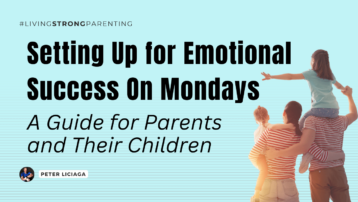In today’s rapidly changing world, the challenges our children face are multifaceted. As parents, educators, and caregivers, it’s our responsibility to equip them with the tools they need to thrive. I recently had the privilege of producing a 25-minute video presentation on this very topic, aiming to empower parents and caregivers with knowledge and strategies. The best part? I’m offering this knowledge entirely free of charge, with the hope of empowering not just individual parents, but entire communities.
If, after watching the presentation, you feel the need for personalized guidance, I’m here to help. You can always book a free one-on-one session with me to delve deeper into your individual needs.
Slide-by-Slide Breakdown:
1. Empower Your Child
This introductory slide sets the stage for the entire presentation. Empowering a child is about nurturing their inner strength, resilience, and self-belief. The focus is on three core pillars: Confidence, Discipline, and Focus. These foundational elements will help our children navigate life’s challenges with strength and resilience.
2. Introduction
Here, we delve into the importance of introducing ourselves and setting the stage for effective communication with our children. It’s crucial to present our expertise and experience and understand its role in child development.
3. Understanding ACEs
Adverse Childhood Experiences (ACEs) can have lasting impacts. Recognizing the signs and providing compassionate understanding are essential steps in helping children who may have experienced trauma.
4. Trauma-Informed Care
Understanding trauma and its effects is vital. This section explores what Trauma-Informed Care means and the importance of creating a safe and supportive environment for children.
5. Positive Reinforcement
Positive psychology principles play a significant role in child development. By focusing on strengths and using Neuro-Linguistic Programming (NLP) for positive language, we can reinforce positive behaviors and mindsets.
6. Effective Communication
Communication is the key. Using NLP techniques such as Mirroring, Anchoring, and Coaching, we can establish strong communication channels with our children.
7. Setting Boundaries with Empathy
Discipline is essential, but it must be done with empathy. This section delves into understanding discipline for children with trauma and using NLP strategies for positive boundary setting.
8. Building Resilience and Confidence
A growth mindset is crucial for building resilience. By praising effort over outcomes and setting achievable goals, we can instill confidence in our children.
9. Mindfulness and Emotional Regulation
Mindfulness practices from NLP and Positive Psychology can provide tools for emotional regulation, helping children manage their emotions effectively.
10. Routine and Structure
Routines provide safety and predictability. Collaborating with your child to create routines can establish a sense of security.
11. Modeling Behavior and Seeking Support
Modeling desired behaviors is essential. It’s also crucial to recognize when professional help is needed and seek support accordingly.
12. Continuous Learning and Conclusion
As our children grow, our parenting strategies must adapt. Staying updated with the latest research and adapting to our child’s needs is essential.




